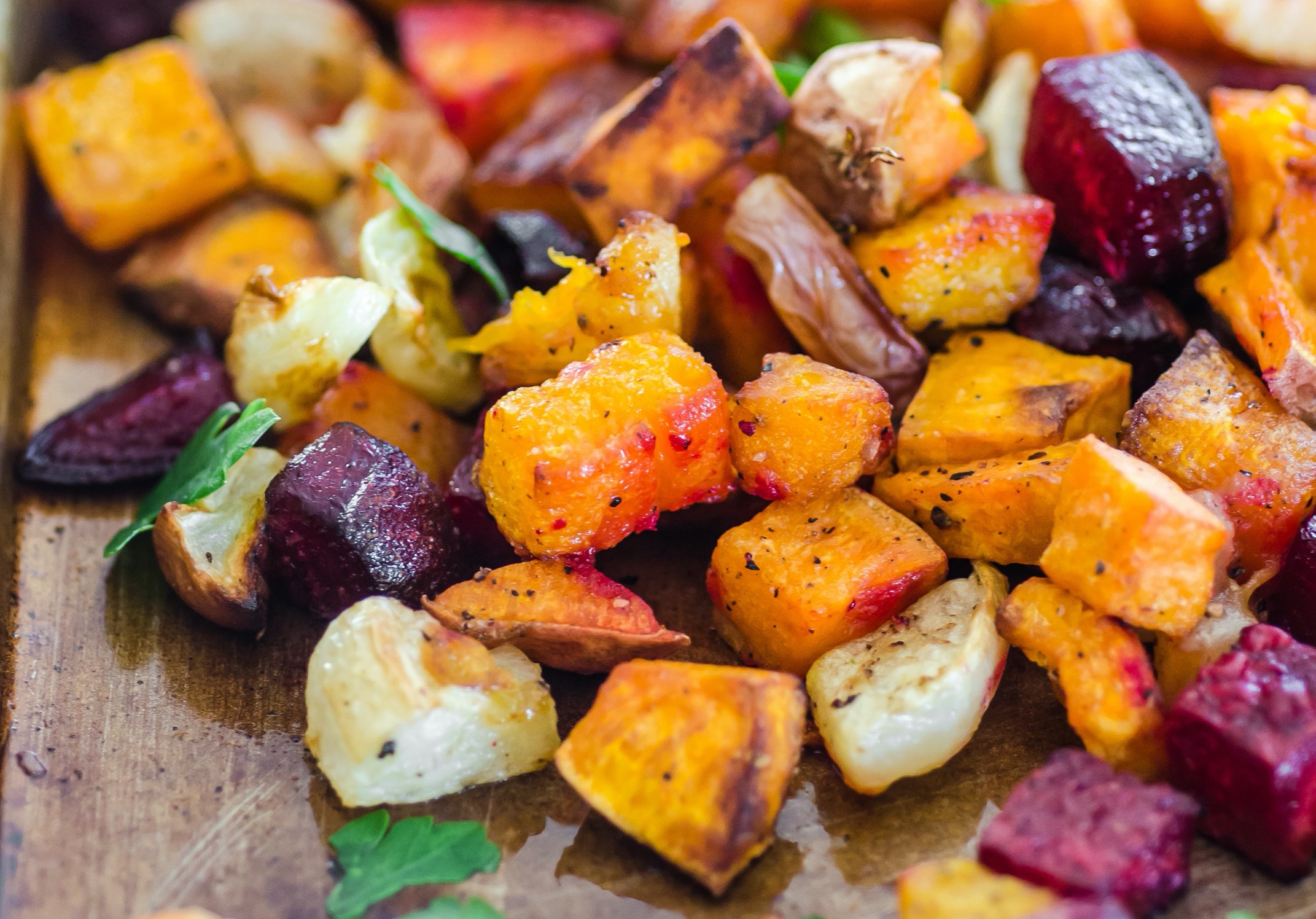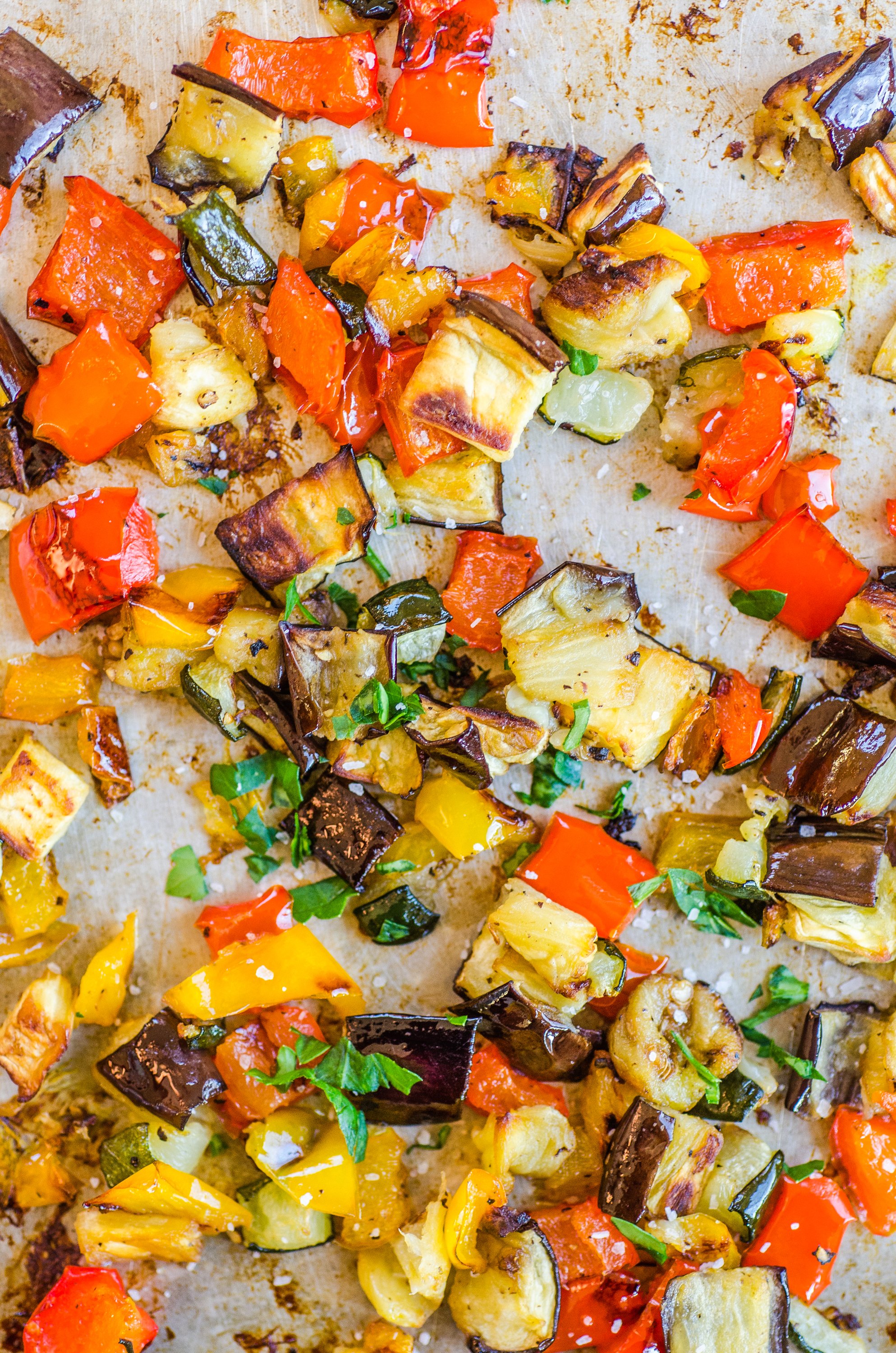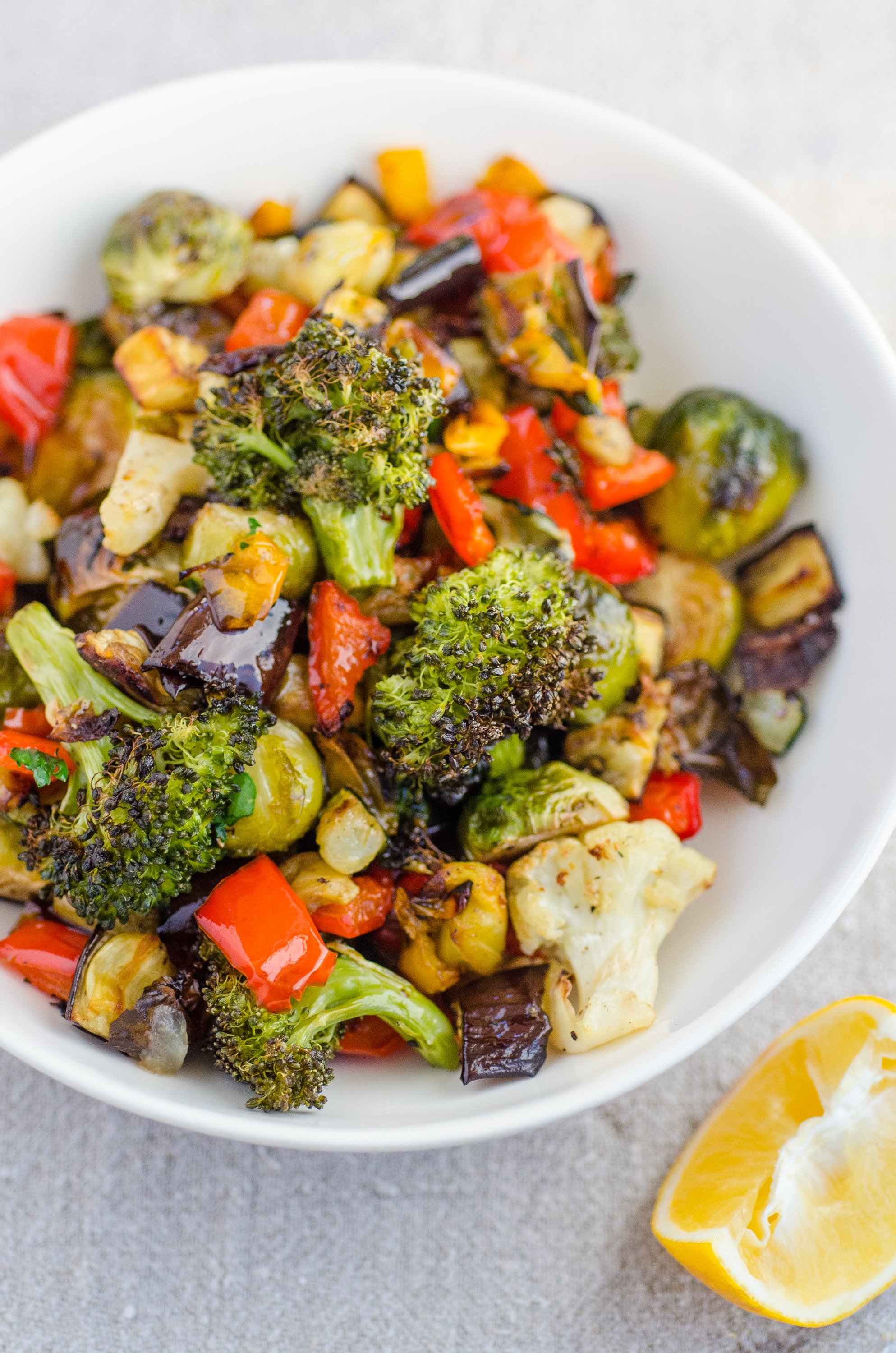
Photo by Faith Durand.
I am a firm believer in the power of a roasted vegetable. Not only can virtually every vegetable be cooked in this way — no recipe required — but roasted vegetables are also universally pleasurable to eat. Have a picky eater in the house? Want a break from your usual steamed veggie side dish? Try roasting your broccoli or green beans or cauliflower tonight. I think you’re in for a treat.
What Vegetables to Roast
Root vegetables — like potatoes, parsnips, sweet potatoes, and carrots — are old standbys when it comes to roasting, of course, but take a look through your crisper drawer and you’ll find all sorts of roasting candidates — from crucifers like broccoli and Brussels sprouts to surprises like zucchini, onions, bell peppers, and cabbage. Even tomatoes can be roasted.
If you’re not sure if a particular vegetable can be roasted, my recommendation is to just give it a try. It might not end up being your favorite way to eat that vegetable, but it’s definitely worth the experiment to find out.
Don’t Skimp on the Oil
Once you’ve cut your vegetables down into bite-sized pieces, toss them with some good-tasting oil. Use enough to give the vegetables a slick, glossy coating, but not so much that you have puddles in the bottom of your bowl — a tablespoon or two will usually get the job done. Not only does the oil help the vegetables cook more evenly and crisp up in the oven, but it also adds a rich flavor that makes roasted vegetables irresistible.
I usually use a mild olive oil when roasting vegetables, but you could also use coconut oil, avocado oil, or any other oil you like to use. Also, I usually toss the vegetables with my hands so I can rub the oil into the vegetables and make sure they’re evenly coated.
Last but not least, toss your vegetables with some salt. You can add black pepper or any other seasonings, as well. Again, be generous, but not excessive — add enough salt and other seasonings so that each piece of vegetable gets a little.

Photo by Faith Durand.
Give the Vegetables Space (More than You Think!)
Spread the vegetables out onto a baking sheet. You want to see a bit of space around the veggies — don’t be afraid to split them between two baking sheets if you need to. Crowding will make the vegetables steam instead of roast, and that’s the opposite of what we’re going for.
Also, make sure your oven is good and hot before you put the vegetables in to roast. I think around 425°F is ideal for roasting most vegetables, although you can adjust up or down as you prefer.
Roast Until You See Toast
Roast until the vegetables are tender enough to pierce with a fork and you see some charred bits on the edges. Softer vegetables cook more quickly, while harder vegetables like potatoes will cook more slowly. Smaller pieces will also cook more quickly than larger pieces. If you’re roasting a new-to-you vegetable, start checking after about 15 minutes, and keep roasting until you see charred bits.
Those charred bits are what make roasted vegetables so good, so even if the vegetables are already tender and cooked through, keep roasting until you see the vegetables start to turn toasty around the tips and edges. If in doubt, roast an extra five or 10 minutes — it’s unlikely the extra roasting will hurt, and very likely that your vegetable will be even tastier.

Photo by Faith Durand.
3 Ways to Roast Mixed Vegetables
If you’d like to make a mixed-vegetable side dish, you have three options.
- Roast vegetables individually: First, and easiest, you can roast the individual vegetables on separate trays and combine them after roasting. This lets you monitor how quickly each vegetable is cooking and pull each vegetable from the oven as it’s done.
- Pair “vegetable friends”: Second, you can pair together “vegetable friends” — ones that roast at roughly the same rate. For instance, you could roast cauliflower and broccoli together, or butternut squash with potatoes. Combine these on the same baking sheet and roast them together. If the baking sheet is getting crowded, split them between two sheets.
- Roast in stages: Third, you can add different vegetables to the baking sheet in stages — start roasting the hardest, longest-cooking vegetables first, and then add softer, quicker-cooking vegetables later on. If the baking sheet starts to get full, split the vegetables between two pans so you don’t crowd them. Aim to have all the vegetables finish roasting around the same time, and remember: A little extra roasting time is unlikely to hurt.
Photo by Faith Durand.
General Roasting Times for Vegetables
Cooking times are for roasting vegetables at 425°F.
- Root vegetables (beets, potatoes, carrots): 30 to 45 minutes, depending on how small you cut them
- Winter squash (butternut squash, acorn squash): 20 to 60 minutes, depending on how small you cut them
- Crucifers (broccoli, cauliflower, Brussels sprouts): 15 to 25 minutes
- Soft vegetables (zucchini, summer squash, bell peppers): 10 to 20 minutes
- Thin vegetables (asparagus, green beans): 10 to 20 minutes
- Onions: 30 to 45 minutes, depending on how crispy you like them
- Tomatoes: 15 to 20 minutes
How To Roast Any Vegetable
Yield: Serves 4 to 6
Ingredients
- 1 to 2 pounds any vegetables
- 1 tablespoon olive oil
- 1 teaspoon salt
- 1/4 teaspoon freshly ground black pepper
Instructions
Heat the oven to 425°F. Arrange a rack in the middle of the oven and heat to 425°F. Meanwhile, prep the vegetables.
Chop up the vegetables. Peel the vegetables if desired, then cut into uniform pieces so they cook evenly. Smaller pieces will cook more quickly; larger pieces will take a bit longer to cook. If your vegetables still have some moisture after washing, be sure to pat them as dry as possible; the drier the vegetable, the better it will roast.
Toss the vegetables with olive oil and season. Transfer the vegetables to a large bowl. Add the oil, salt, and pepper and toss to combine. Add more oil if the vegetables still look dry or don't seem evenly coated.
Spread onto a baking sheet. Spread the vegetables out on a rimmed baking sheet, in an oven-proof skillet, or in a baking dish. Make sure they are in a single layer with a little space in between. If they are too crowded, the vegetables will steam instead of roast -- use 2 baking sheets if needed instead.
Estimate your cooking time. In general, softer vegetables, like green beans and cauliflower, will cook in 10 to 20 minutes, and tough, hard vegetables, like winter squash and potatoes, will take 30 minutes or longer. Large pieces will also take longer to cook than smaller pieces.
Roast the vegetables until tender. Place the vegetables in the oven and begin roasting. Check and stir the vegetables every 10 to 15 minutes. Continue roasting until the vegetables are easily pierced with a fork or knife and they are showing crispy, charred bits at the tips and edges.
Serve. Transfer the vegetables to a serving dish and taste; sprinkle with more salt or pepper if needed.
Recipe Notes
Roasting mixed vegetables together: You can roast different vegetables on separate trays and combine them after roasting, or you can cook them all on one baking sheet. If cooking on one baking sheet, start cooking the toughest, longest-cooking vegetables first and add the other vegetables later according to their estimated cooking time. For instance, start roasting potatoes for 30 minutes, and then add green beans for the last 15 to 20 minutes of roasting. Be careful not to crowd the pan, or the vegetables will steam instead of roast.
Storage: Leftovers can be refrigerated in an airtight container for up to 5 days.